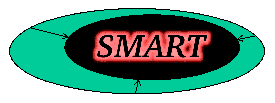| Millions of mines are infesting over seventy countries on all continents.
They still maim or kill decades after they were laid. They have enormous
and long-term effects on a country: they maim the young generations; they
reduce the farming capabilities; they disorganize the transportation system;
they slow down the reconstruction of power lines and waterways; they prevent
the use of some drinkable water points, causing the appearance or re-appearance
of diseases and making the health care system overburdened; they force budget
to be dedicated to demining programmes instead of public health, education
or infrastructure restoration. The whole industrial, economical and social
life of a country can be disrupted by a mine infection.
Demining is a very dangerous and time-consuming activity. At the
present speed, clearing all the known mined areas would take decades, even
if no additional mine is laid. To face the problem of mine infection, a
Convention on the Prohibition of the Use, Production, Transfer
and Stockpiling of Anti-Personnel Landmines and on Their Destruction
has been signed at Ottawa (Canada) in December 1997. Moreover many organizations
are helping regularly the victims of mine injuries all over the world.
Finally, many researchers are trying to use new technologies in order to
improve mine clearance.
Three levels of survey of a country are usually defined:
- Level One: General survey
to collect information on the general locations of suspected
or mined areas. Information must be collected about the areas affected
by mines or UXO and areas that are not affected. Areas must be categorised
and the reliability and credibility of data recorded. A Level One:
General Survey is a prerequisite for the planning of a Level Two: Technical
Survey. The content and level of detail will vary according to the
level of survey undertaken.
- Level Two: Technical Survey
to determine and delineate the perimeter of mined locations
initially identified by a Level One: General Survey. The marked perimeter
forms the area for future mine clearance operations. The Level Two
survey requires trained and properly equipped mine clearance personnel with
the necessary skills to undertake and accurately record the survey work.
Where possible, with time and resources permitting, these teams should also
undertake area reduction work in order to accurately define the outer perimeters
of the minefield.
- Level Three: Completion Survey
The Level Three: Completion Survey is conducted in conjunction
with the mine clearance teams and accurately records the area cleared.
The benchmark is to be left in the ground to serve as a minimum marker of
the initial minefield area. It is also recommended that permanent markers
be used to indicate turning and intermediate points of the perimeter of
the mined area.
The relevant definitions from IMAS
are:
- General Mine Action Assessment
the process by which a comprehensive inventory can be obtained
of all reported and/or suspected locations of mine or UXO contamination,
the quantities and types of explosive hazards, and information on local
soil characteristics, vegetation and climate; and assessment of the scale
and impact of the landmine problem on the individual, community and country.
- Area Reduction
the process through which the initial area indicated as contaminated
(during the general mine action assessment process) is reduced to a smaller
area.
Note: Area reduction may involve some limited clearance, such
as the opening of access routes and the destruction of mines and UXO which
represent an immediate and unacceptable risk, but it will mainly be as
a consequence of collecting more reliable information on the extent of
the hazardous area. Usually it will be appropriate to mark the remaining
hazardous area(s) with permanent or temporary marking systems.
Note: Likewise, area reduction is sometimes done as
part of the clearance operation.
- Technical Survey
the detailed topographical and technical investigation of
known or suspected mined areas identified during the planning phase. Such
areas may have been identified during the general mine action assessment
or have been otherwise reported (previously referred to as a Level 2 survey).
In this context and keeping in mind the Stability Pact for South Eastern Europe, the goal of
SMART is to provide the end-users
with
- safe,
- cost-effective,
- efficient,
- innovative,
- validated, and
- user-friendly tools
for the monitoring of the environment and for the assistance to people
in countries afflicted by landmines in order to achieve a higher quality
of the service, by efficiently improving level 1 minefield surveys in South
Eastern Europe. |

